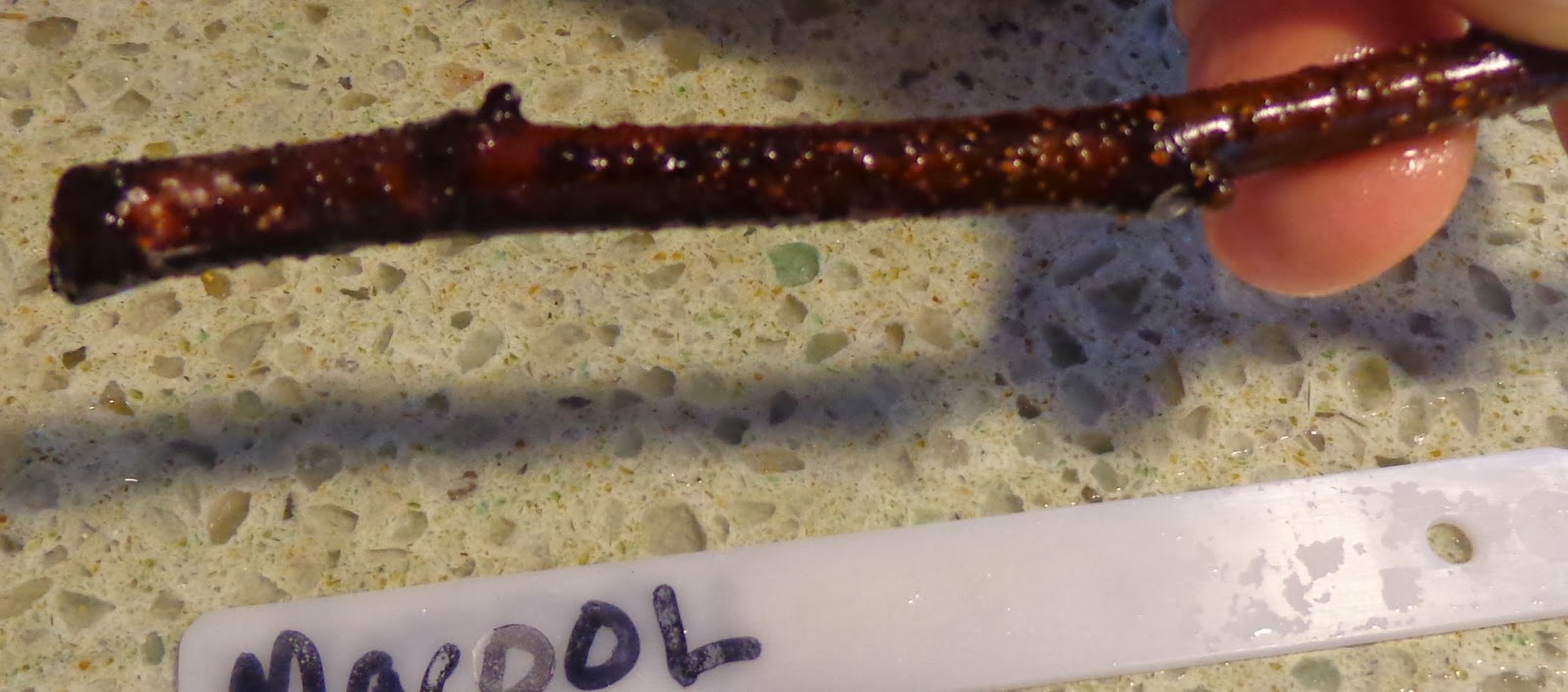 |
| Bagged Apples. 6.7.15 |
 |
| Chinese Haw "Red Sun". 6.7.15 |
For most of the fruits, there isn't a lot that needs to be done, from now to fall. If I am up to it, I can cut weeds, re-mulch, and do some summer pruning. Some will need watering.
The zipper lock fruit bags always seem steamed. I don't know if that hurts anything. I have not seen that mentioned as an issue.
Ning's Chinese Haw has a nice crop of fruit, still small and green. First year for that. Deer like any branches within reach.
Almaden Duke Cherry multigraft. I finished grafting yesterday. Nothing to do until about 3 weeks from now, when the ties need to be removed.
Jonared apple multigraft. Not much to do. Re-mulch. Tie down the branches for better spread of scaffold. Any time this summer.
Fig row. Lattarula is the most vigorous at the moment. They will get water, but no fertilizer.
Meyer Lemon, in container. Blooming nicely. The fragrance is present even when not in sight. Very sweet. Leaves look yellow, but that doesn't seem to hurt. Just needs water this summer. I do give it some acid-loving plant miracle grow, dilute.
Other citrus, unknown seedling, about 18 years old, just for decoration. No bloom, not surprised. Kumquat, no bloom. I thought it might. Same treatment as Meyer lemon.
Yates Persimmon. Now that it's summer, I will back down on the nitrogen boost. This is first-leaf, so it will need regular watering. Same with Mango Pawpaw and Sweet Treat Pluerry. Speaking of which, the leaves are insect magnets. Full of holes. If it continues like that, I may not keep it.
Genetic dwarf peach seedling. Very lush. I think it's in it's 3rd or 4th year. No idea if or when it will bloom. Kept out of rain all winter. Zero leaf curl. Genetic dwarf peaches that were in the rain - covered with leaf curl.
 |
| Amaden Duke Cherry multigraft. 6.7.15 |
 |
| Jonared Apple Multigraft. 6.7.15 |
 |
| Lattarula Fig. 2nd year from cutting. 6.7.15 |
 |
| Meyer Lemon. 6.7.15 |
 |
| Yates Persimmon. 6.7.15 |
 |
| Genetic Dwarf Peach Seedling. 6.7.15 |











































